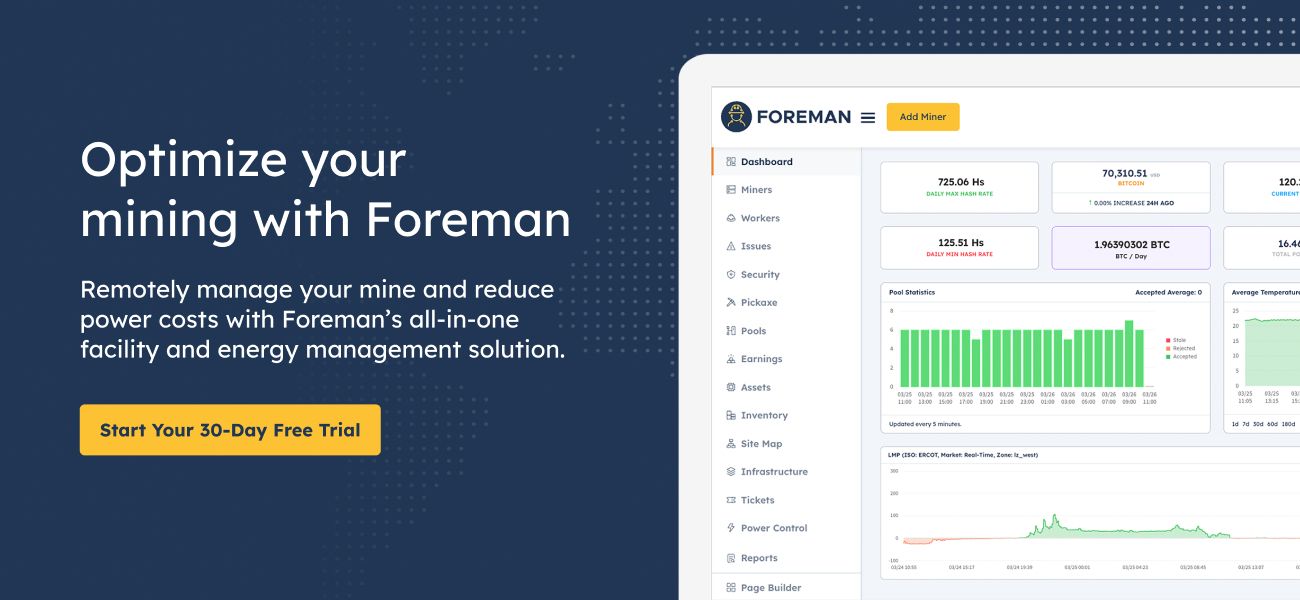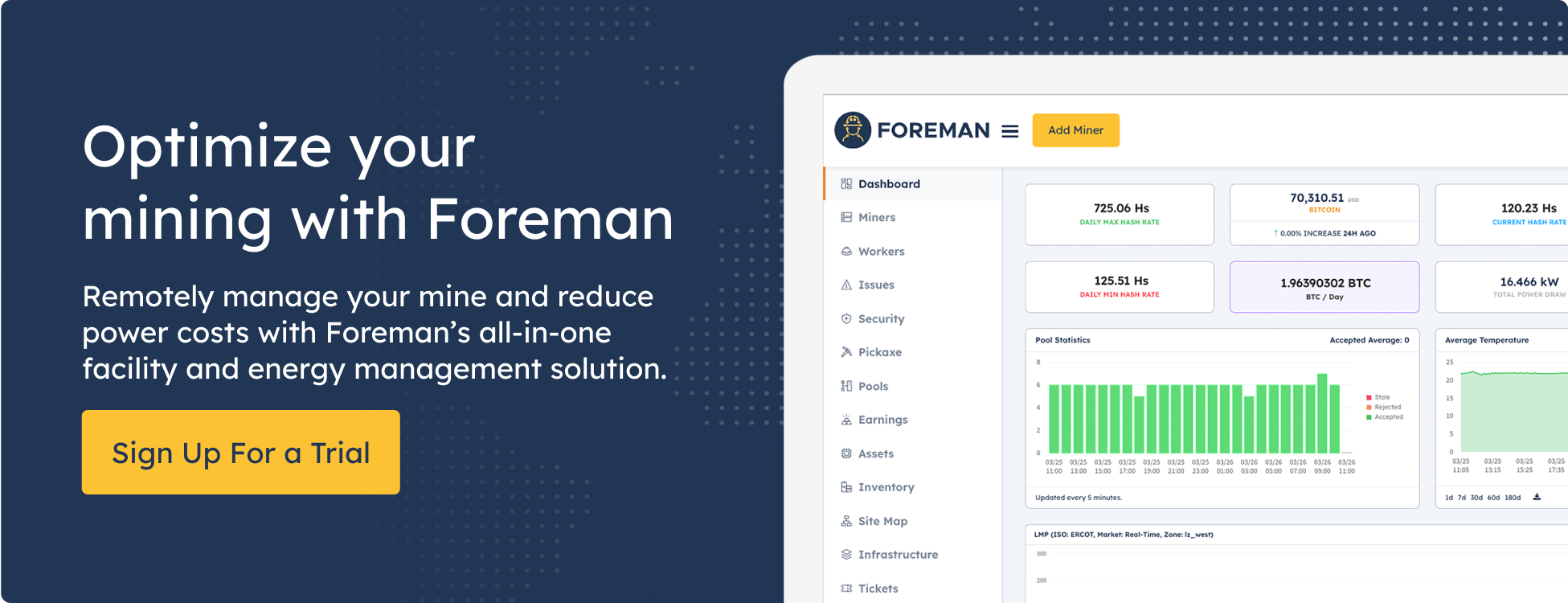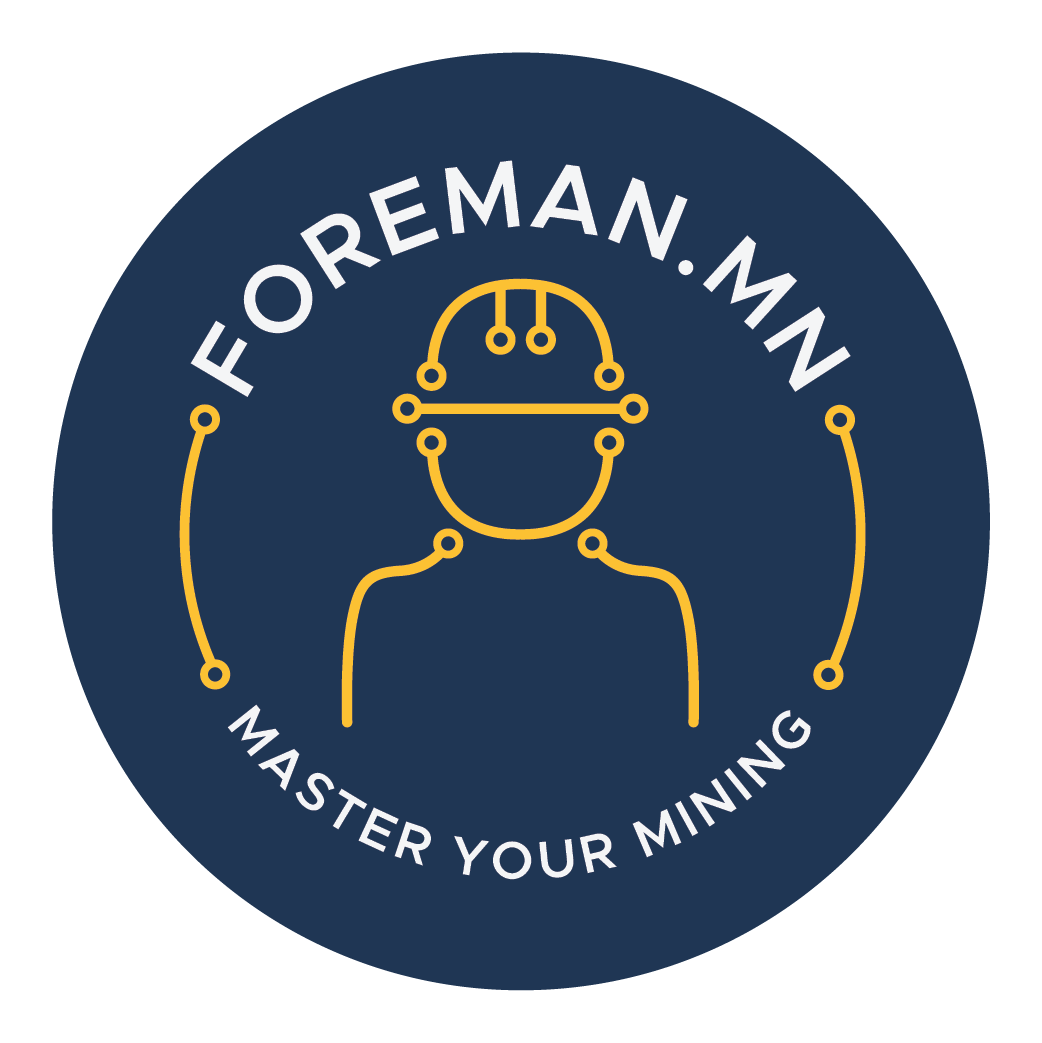As the world of Bitcoin mining continues to evolve, miners play a crucial role in ensuring the security of the decentralized network by validating new transactions and adding them to the blockchain. By pooling their resources, miners can improve their chances of successfully mining blocks and earning rewards.
This article will comprehensively cover mining pools, including their importance and how they work. We aim to equip you with the knowledge necessary to make informed decisions about participating in the dynamic landscape of Bitcoin mining.
Why Do We Need Pools?
Before the existence of mining pools, miners engaged in solo mining, working independently to find and validate new blocks on the blockchain. They would receive the entire block reward if their hash were successful in mining a block. However, as the Bitcoin network grew and mining difficulty increased, solo mining became less attractive due to the high variability in block discovery time and the increasing computational power required.
Mining pools emerged as a solution, allowing miners to work together and share rewards based on individual contributions. By pooling their resources, miners in a mining pool collectively increase their chances of finding a valid block, leading to more frequent and consistent payouts than solo mining.
How Do Mining Pools Work?
There are two main participants in pool logistics: miners and pool operators. Miners contribute their computational resources (hash power) to the pool and work on mining tasks assigned by the pool, submitting shares as proof of their contribution. They earn rewards based on the number of shares offered, reflecting their contribution to the mining effort.
On the other hand, the pool operator manages and maintains the pool's infrastructure. Most importantly, operators run the pool server, which distributes mining tasks and tracks submitted shares. The operator also controls the pool's reward distribution and shares difficulty adjustments. In return for providing these services, the pool operator typically charges a fee for providing these pool services. Miners and the pool operator collaborate to increase the pool's overall hash power, allowing the pool to compete more effectively for block rewards. This collaboration benefits miners by providing a more consistent income stream while the pool operator earns revenue from the fees charged to pool members.
Pool Servers
The pool server is a crucial component in a mining pool, responsible for managing communication and coordinating miners' efforts. It handles workload distribution by breaking down the mining process into smaller tasks or shares that assign miners based on their hash power. Delegating work according to contributed hashrate ensures that miners are paid appropriately for the amount of hashrate they contribute to the overall pool effort.
As miners work on their assigned shares and submit them back to the pool server, the server tracks the total shares submitted by each miner. When the pool successfully mines a new block, the block reward and transaction fees are distributed among miners based on the proportion of shares they submitted during the mining round. Some payout structures differ and will be covered in the reward section. This workload distribution enables miners of all sizes to work together efficiently, improving their chances of successfully mining blocks and earning rewards for the pool.
Bitcoin Pool Protocol Evolution
Getwork
The Getwork protocol is an early method used in Bitcoin mining for miners to request work from mining pool servers. Miners would request work from the protocol, receive a block template, and then try to find a valid hash for the block. They would send the solution back to the server and receive Bitcoin if successful. The Getwork protocol was the first mining protocol used in Bitcoin, introduced in 2010 by Gavin Andresen.
However, Getwork had some limitations and needed to keep up with mining hardware as ASICs became more efficient. When Getwork struggled, miners began to look for a better solution.
Stratum V1
Stratum V1 is a widely used mining protocol designed to improve communication efficiency between miners and mining pool servers. It was designed to address the limitations of the earlier Getwork protocol, offering better scalability, reduced network overhead, and support for advanced mining features.
The Stratum V1 protocol establishes a persistent connection between the miner and the mining pool server. This connection enables real-time communication and reduces the need for constant polling, a significant limitation of the Getwork protocol. Instead of sending entire block templates, Stratum V1 updates the miner when certain parts of the block template change, such as new transactions or changes in block height. This approach significantly improves efficiency and reduces bandwidth usage and latency.
Stratum V1 also introduced the concept of share difficulty, allowing miners to submit shares lower than the network's target difficulty. This enables mining pools to track individual miners' contributions better and distribute rewards more fairly.
Stratum V2
Stratum V2 is an improved mining protocol offering better efficiency, security, and flexibility than Stratum V1. It uses a binary-based communication protocol, reducing bandwidth usage and latency and enabling even faster communication between miners and mining pool servers.
This improvement protocol enhances decentralization by allowing miners to create block templates, improving the network's security. Another key improvement is the introduction of compact blocks, which provide a summarized version of block data.
Implementing Stratum V2 in the Bitcoin mining landscape starts with ensuring that its creators and the community fully develop, test, and refine the protocol. Providing comprehensive documentation, guides, and resources will help mining pool operators, software developers, and firmware developers understand and implement Stratum V2. Braiins was the first to implement Sv2 in half, but not fully. Encouraging developers to update existing mining software and firmware or create new alternatives that support Stratum V2 is crucial. Mining pool operators should also update their server software to ensure compatibility and seamless communication with miners using the updated protocol.
To ensure a smooth transition, it's essential to have backward compatibility with Stratum V1 for miners who have yet to upgrade to Stratum V2. Providing information and support to miners on the benefits of Stratum V2 and guiding them through updating their mining software and firmware is necessary. Continuously monitoring the performance and adoption of Stratum V2 while addressing any issues or concerns that arise during the transition process will contribute to the protocol's success. Fostering an open and collaborative environment will enable the mining community to contribute to the development, adoption, and improvement of Stratum V2, ultimately establishing it as the industry standard. Additionally, there is an opportunity within the Fedimint protocol to further advance Stratum V2 in what is called Fedipool and an additional pool type on top of V2.
“Rather than a single pool operator constructing blocks and choosing which transactions to include, each Guardian can construct their own blocks, reducing censorship risk. Additional miners can join the pool in the future to take advantage of the above, but rather than be a Guardian, they choose which Guardian they want to construct their blocks.” - Odell
Choosing A Mining Pool
Five Factors To Consider
To make the most of your mining, it's crucial to consider several factors when choosing a mining pool. These include the pool's reputation, fees, reward distribution method, size and hashrate, and location and server stability.
- Reputation: Choose a pool with a good reputation in the mining community based on feedback and reviews from other miners.
- Pool fees: Compare pool fees and choose a pool with competitive fees that align with your preferences.
- Reward distribution method: Choose a pool with a reward distribution method that aligns with your risk tolerance and preferences.
- Pool size and hashrate: Consider the pool's size and hashrate, choosing one that aligns with your desired balance between payout frequency and size.
- Location and server stability: Choose a pool with servers closer to your location that is reliable and stable.
Reward Distribution Methods
Miner reward distribution methods are how Bitcoin mining pools allocate block rewards and transaction fees among their participating miners. These methods compensate miners fairly for their contributions to the pool's combined hash power. Some standard miner reward distribution methods include:
Transparent Index of Distinct Extended Shares (TIDES): TIDES is a forward-thinking Bitcoin mining reward system created by Oceans Pool that offers direct payouts to miners for valid proofs (proof of work) once a block is mined. This approach mirrors the FPPS model in providing payments post-block discovery but diverges by forgoing a central wallet for distributing funds. Instead, TIDES ensures that the block reward, including transaction fees, is sent directly to miners' addresses, enhancing transparency and minimizing trust issues associated with intermediary handling. The system is designed to be fully auditable. It does not require the mining pool to act as a custodian, thereby streamlining the reward process and ensuring a transparent and equitable distribution of the mining rewards.
Pay Per Share (PPS): In PPS, miners receive a fixed payment for each valid share they submit, regardless of whether the pool mines a block. This method provides a stable income for miners but often comes with higher pool fees, as the pool operator takes on the risk of variance.
Full Pay-Per-Share (FPPS): Similar to PPS, this is a reward system used by some mining pools that offer a fixed payout for each valid share miners contribute. This payout usually combines the block reward and transaction fees and provides a predictable payout for miners.
Pay Per Last N Shares (PPLNS): PPLNS considers a miner's contribution over a set number of shares (N) when a block is found rather than just the shares submitted during the current mining round. This method rewards loyal pool participants and discourages pool hopping. PPLNS can lead to variance in miner rewards, as miners are only paid when a block is found, but usually, this schedule has lower pool fees.
Pay Per Share Plus (PPS+): PPS+ combines elements of PPS and PROP, offering both fixed payments for each share and a separate proportional reward based on the number of shares submitted when a block is found. This method can provide stable earnings while incentivizing miners to contribute consistently.
Different Bitcoin mining pools use different reward distribution methods, depending on the pool operator's preferences and the mining community.
Pools and Miners Participating in Demand Response
Demand Response is a concept in which miners adjust their electricity consumption in response to grid supply and demand changes. For example, this can be done by temporarily reducing mining activities during peak demand periods or increasing mining during periods of low demand and lower electricity prices. To participate in Demand Response, miners need a flexible reward distribution method that doesn't penalize them for temporary reductions in hash power.
The Pay Per Share (PPS) method is likely the most suitable for miners participating in Demand Response. In the PPS method, miners receive a fixed payment for each valid share they submit, regardless of whether the pool mines a block. This method provides a stable income for miners and doesn't penalize them for reducing their hash power during peak demand periods, as they get paid for each share they submit.
By contrast, other reward distribution methods, such as Proportional (PROP) and Pay Per Last N Shares (PPLNS), may be less suitable for DR participants, as they consider a miner's contributions over a more extended period or during the entire mining round. Miners participating in Demand Response might miss out on rewards during peak demand periods, as they would submit fewer shares during those times.
Foreman Features To Improve Pool Performance
Pool Switching
Foreman offers an easy pool-switching feature that allows miners to switch between mining pools quickly and efficiently. With Foreman, miners can use a single dashboard to manage multiple mining pools, making it easy to monitor and switch between pools based on current profitability. This feature can save miners time and effort, as they no longer need to navigate multiple pool interfaces or manually switch between pools. Additionally, Foreman's pool audit feature can help miners evaluate the fairness and reliability of pools before switching to them. Foreman's easy pool-switching feature is valuable for miners who want to optimize their mining profits and streamline their mining operations.
Pool Audits
One of the critical features of Foreman is the ability to audit pool payouts to verify that you’re being paid fairly for the work of your miners. Pool audits involve analyzing mining pool transactions to ensure they are valid and compliant with the mining pool's stated terms and conditions. The audit process thoroughly examines the pool's transaction history, including payouts, fees, and reward structures. By conducting pool audits, Foreman can provide valuable insights into the fairness and reliability of mining pools. This information can be crucial for miners who want to ensure accurate mining rewards and participate in trustworthy mining pools.
Trusted Pool Configurations
Foreman's Trusted Pool Configurations offer an excellent solution for safeguarding your mining operation at the pool level. This feature ensures that your mining environment remains secure and efficient by setting constraints on worker names and Stratums, providing a clear overview and control of your mining activities. By setting trusted pool perimeters, you can ensure the miners in your fleet are only hashing to pools approved by the top-level account. Trusted Pool Configuration can also be applied across various organizational and site levels, allowing you to customize each setup individually. Foreman continuously monitors and evaluates miners' pool configurations when a trusted pool is configured, identifying any discrepancies or non-compliant setups. By implementing Trusted Pool Configurations, you can maintain the integrity of your mining operations while reducing the risk of mistakes or unauthorized changes.
Risks and Considerations
Knowing the risks and considerations involved is essential when choosing a mining pool. Larger mining pools may centralize network control, compromising security and decentralization. Pools are also vulnerable to distributed denial-of-service (DDoS) attacks, which can disrupt mining operations and affect payouts. Unstable pools may experience frequent downtime, reducing mining efficiency and profitability. Technical issues can also arise with pool servers, mining software, or hardware, potentially affecting mining operations and payouts.
In addition to technical risks, security risks also exist. Malicious actors may attempt to steal miners' earnings or gain unauthorized access to pool servers. Robust security features like 2FA and SSL encryption can help to mitigate these risks.
Furthermore, the constantly evolving mining landscape may affect operations' profitability and certain pools' attractiveness to miners. Changes in mining difficulty, rewards, and regulations can impact the profitability of mining operations. By understanding these risks and considerations, miners can make informed decisions when choosing a mining pool and take steps to mitigate potential issues.



